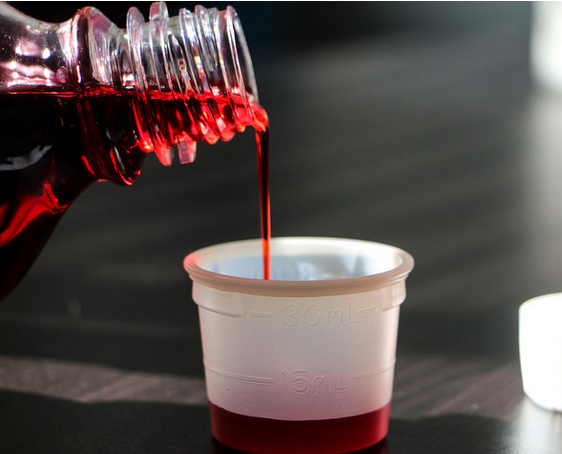Kids and Breastfeeding Mums Should Stop taking Cough Syrup or Pain Medications that Contain Codeine or Tramadol – FDA Warns

The Food and Drug Administration (FDA) warns that drugs containing codeine or tramadol should not be given to children under 12 and that such drugs can also be dangerous to youth between 12 and 18 or in women who are breast-feeding.
”The Food and Drug Administration (FDA) is restricting the use of codeine and tramadol medicines in children. Codeine is approved to treat pain and cough, and tramadol is approved to treat pain. These medicines carry serious risks, including slowed or difficult breathing and death, which appear to be a greater risk in children younger than 12 years, and should not be used in these children. These medicines should also be limited in some older children. Single-ingredient codeine and all tramadol-containing products are FDA-approved only for use in adults. We are also recommending against the use of codeine and tramadol medicines in breastfeeding mothers due to possible harm to their infants.
As a result, we are requiring several changes to the labels of all prescription medicines containing these drugs. These new actions further limit the use of these medicines beyond our 2013 restriction of codeine use in children younger than 18 years to treat pain after surgery to remove the tonsils and/or adenoids. We are now adding:
- FDA’s strongest warning, called a Contraindication, to the drug labels of codeine and tramadol alerting that codeine should not be used to treat pain or cough and tramadol should not be used to treat pain in children younger than 12 years.
- A new Contraindication to the tramadol label warning against its use in children younger than 18 years to treat pain after surgery to remove the tonsils and/or adenoids.
- A new Warning to the drug labels of codeine and tramadol to recommend against their use in adolescents between 12 and 18 years who are obese or have conditions such as obstructive sleep apnea or severe lung disease, which may increase the risk of serious breathing problems.
- A strengthened Warning to mothers that breastfeeding is not recommended when taking codeine or tramadol medicines due to the risk of serious adverse reactions in breastfed infants. These can include excess sleepiness, difficulty breastfeeding, or serious breathing problems that could result in death.
Caregivers and patients should always read the label on prescription bottles to find out if a medicine contains codeine or tramadol. You can also ask your child’s health care provider or a pharmacist. Watch closely for signs of breathing problems in a child of any age who is taking these medicines or in infants exposed to codeine or tramadol through breastmilk. These signs include slow or shallow breathing, difficulty or noisy breathing, confusion, more than usual sleepiness, trouble breastfeeding, or limpness. If you notice any of these signs, stop giving the medicine and seek medical attention immediately by going to an emergency room or calling 911.
Health care professionals should be aware that tramadol and single-ingredient codeine medicines are FDA-approved only for use in adults. Consider recommending over-the-counter (OTC) or other FDA-approved prescription medicines for cough and pain management in children younger than 12 years and in adolescents younger than 18 years, especially those with certain genetic factors, obesity, or obstructive sleep apnea and other breathing problems. Cough is often secondary to infection, not serious, and usually will get better on its own so treatment may not be necessary.
Codeine and tramadol are a type of narcotic medicine called an opioid. Codeine is used to treat mild to moderate pain and also to reduce coughing. It is usually combined with other medicines, such as acetaminophen, in prescription pain medicines. It is frequently combined with other drugs in prescription and over-the-counter (OTC) cough and cold medicines. Tramadol is a prescription medicine approved only for use in adults to treat moderate to moderately severe pain. However, data show it is being used in children and adolescents despite the fact that it is not approved for use in these patients.
In early 2013, FDA added a Boxed Warning to the codeine drug label cautioning against prescribing codeine to children of any age to treat pain after surgery to remove tonsils or adenoids. We also issued Drug Safety Communications in July 2015 and September 2015 warning about the risk of serious breathing problems in some children who metabolized codeine and tramadol much faster to their active form than usual (called ultra-rapid metabolism), causing potentially dangerously high levels in their bodies too quickly. At that time, we said we would continue to evaluate this safety issue. As part of that safety review, the codeine-related safety issues were discussed at an FDA Advisory Committee meeting in December 2015.
Our review of several decades of adverse event reports submitted to FDA* from January 1969 to May 2015 identified 64 cases of serious breathing problems, including 24 deaths, with codeine-containing medicines in children younger than 18 years. This includes only reports submitted to FDA, so there may be additional cases about which we are unaware. We also identified nine cases of serious breathing problems, including three deaths, with the use of tramadol in children younger than 18 years from January 1969 to March 2016 (see Data Summary). The majority of serious side effects with both codeine and tramadol occurred in children younger than 12 years, and some cases occurred after a single dose of the medicine.
In our review of the medical literature1-19 for data regarding codeine use during breastfeeding, we found numerous cases of excess sleepiness and serious breathing problems in breastfed infants, including one death. A review of the available medical literature4,5,23,24 for data regarding tramadol use during breastfeeding did not reveal any cases of adverse events. However, tramadol and its active form are also present in breast milk, and tramadol has the same risks associated with ultra-rapid metabolism as codeine.
We will continue to monitor this safety issue. We are considering additional regulatory action for the OTC codeine products that are available in some states. OTC codeine products are available in combination with other medicines for cough and cold symptoms. We are also considering an FDA Advisory Committee meeting to discuss the role of prescription opioid cough-and-cold medicines, including codeine, to treat cough in children.
We urge patients and health care professionals to report side effects involving codeine-and tramadol- containing medicines to the FDA MedWatch program, using the information in the “Contact FDA” box at the bottom of the page.”



Both drugs are very crazy ones. Thanks for sharing MIM.
thnk mim
Noted…..Thanks MIM